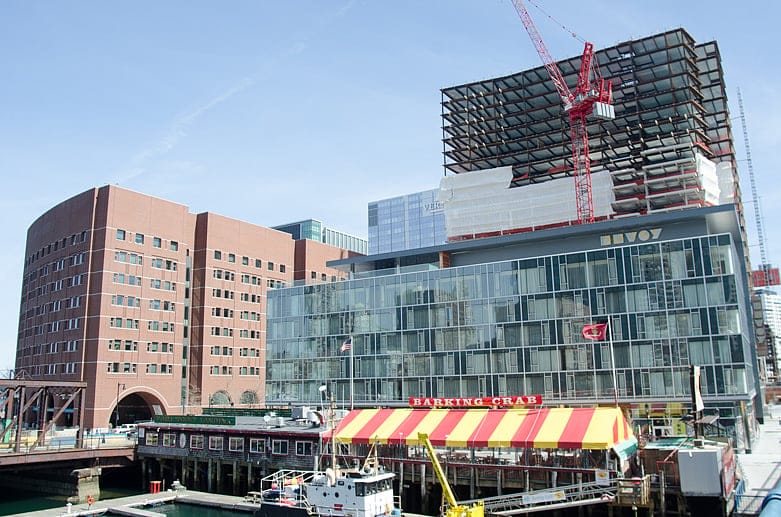As Seaport’s menu evolves, Barking Crab anchors tradition

BOSTON – Entering South Boston's Seaport District from the Evelyn Moakley Bridge, the red and yellow awnings of the Barking Crab restaurant stand out from the sleek Envoy Hotel behind it. A red crane pops out beyond the hotel, rising from yet another Fan Pier construction site. Cranes have become a common sight over the past decade, as have new competitors for the Crab.
When it opened in May 1994, the Crab offered outdoor seating under its canvas tent. Within a few years it expanded into the adjacent Neptune Lobster and Seafood Market, providing a more traditional setting for diners. With the addition of a wood stove, the dining room stays open year-round.

